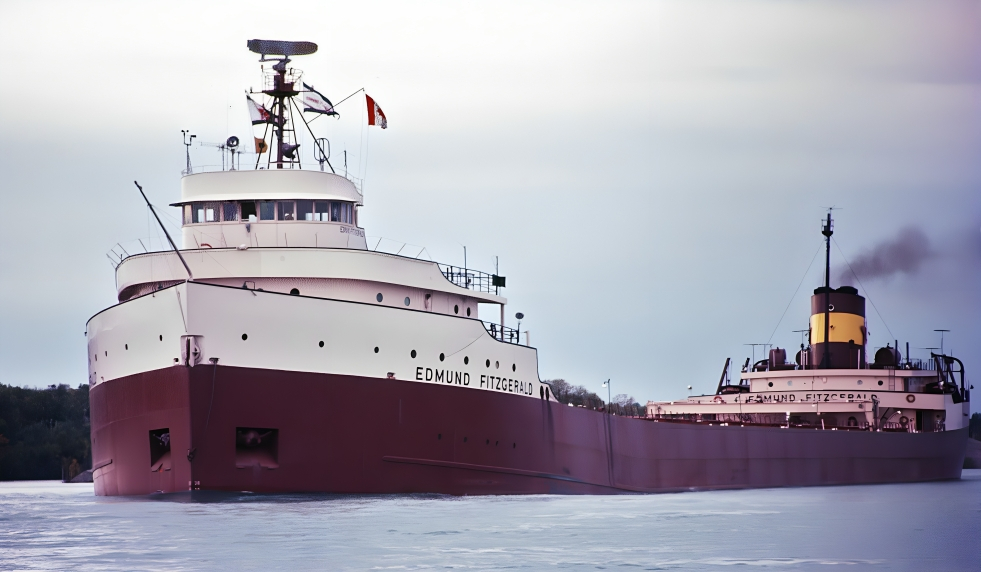by Susan Huppert, NAMMA
Every year, people gather at the Great Lakes Shipwreck Museum at Whitefish Point, ON, Canada, to remember those who died in the tragic sinking of the S.S. Edmund Fitzgerald. The original bell from the 729-foot-long American Great Lakes freighter, referred to as the Titanic of the Great Lakes, tolls 29 times. Each sounding salutes a lost crew member and a 30th time is sounded in memory of the estimated 30,000 others lost on the Great Lakes. The seafarers are not forgotten.
In 1976, a growing awareness of such merciless waters infiltrated minds and homes of those with no personal connection to the Great Lakes when a young Canadian folk singer was impacted by the story. The gravity of the tragic loss penetrated Gordon Lightfoot as he composed, recorded and performed his impression of the moving account of the loss of the Edmund Fitzgerald. Through car radios and LP albums the listening audience and grieving families remembered and wrestled within.
It was about 2:30 p.m. on Nov. 9, 1975. Leaves were sensing their seasonal change on a late Autumn day when the S.S. Edmund Fitzgerald began its common journey from Superior, WI to Detroit, MI With 26,116 long tons of taconite, a cargo she had carried for the past 17 years.
Capt. Ernest M. McSorley brought her out into the open waters. His crew prepared for the journey under seasoned leadership. The weather seemed calm but the National Weather Service issued gale warnings for the area the vessel was to pass through. As a measure of precaution, an alternate route was taken.
Common to the Great Lakes, rough waters before winter posed challenges. By the following morning, the ship reported winds at 35 knots with waves of ten feet. McSorely contacted the S.S. Arthur M. Anderson, another vessel traveling slightly behind him for directives as both of his radars were damaged.
McSorley reported to another ship, the Avafors, about 7 p.m. that the storm was “one of the worst seas” he had ever experienced. After an intense night and day of wrestling with the ravaging elements and the resulting ship’s damages, the “Fitz” was only about 17 miles from its destination when two waves about 35 feet above the waterline hit the ship with great force. The match was over.
On Nov. 10, 1975, between approximately 7:20 p.m. and 7:30 p.m. it is reported the ship vanished and sank with all crew aboard. On Nov. 14, 1975 a U.S. Navy aircraft detected some magnetic abnormalities, leading to the location of the ship.
The U.S. Coast Guard released its official Marine Casualty Report on July 26, 1977, including recommendations. It stated the most probable cause of the sinking was due to a loss of buoyancy resulting in massive flooding of the cargo hold, most likely taking place from ineffective hatch closures. The report states that the vessel dove into a wall of water and never recovered.
Some data was countered by the Lake Carriers’ Association which has represented the U.S.-flagged Great Lakes fleet since 1880. As discussions and theories continue about the mysterious and traumatic loss of the S.S. Edmund Fitzgerald and crew, one thing is certain; the crew are still remembered every year, and rightly so.





